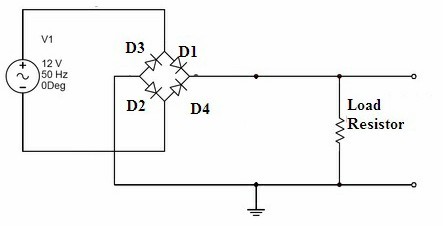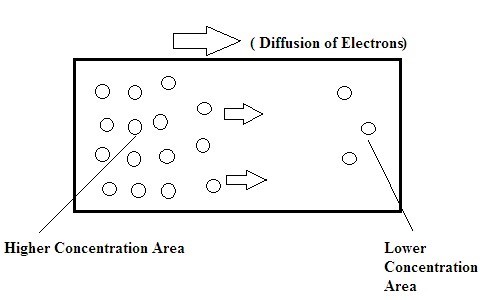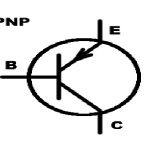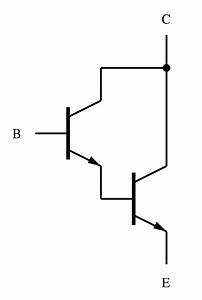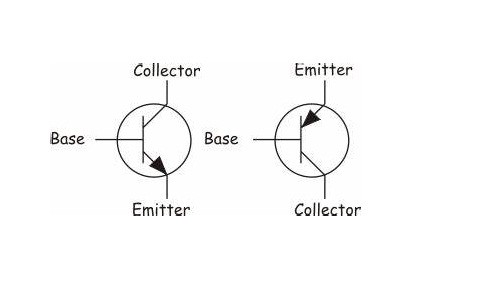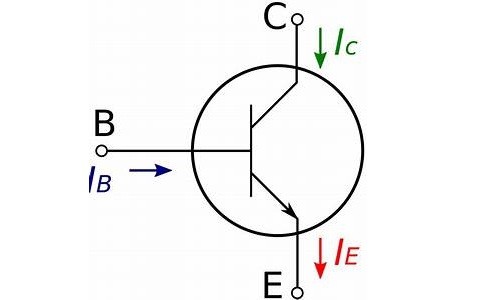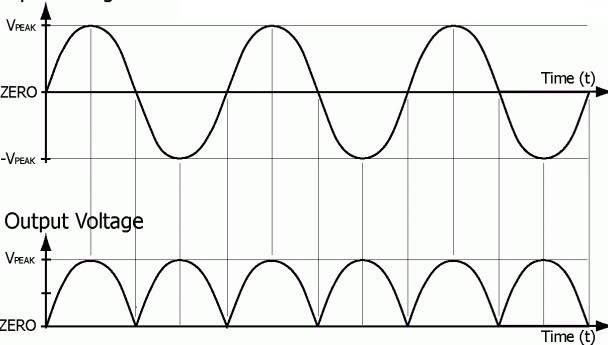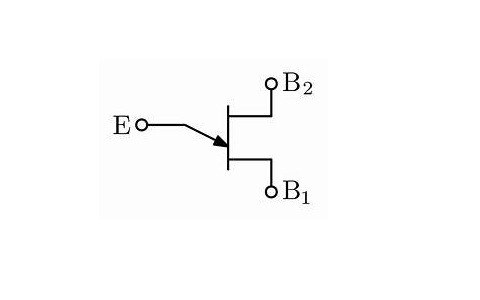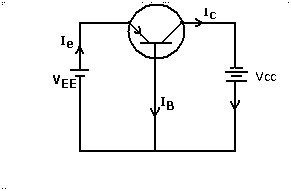A basic diode has various applications it includes rectifiers in it as well. Rectification can be done through the basic diode. It may be current or voltage the AC values will be converted into DC. The basic property of the diode is that it can establish the path for the flow of current in one direction that is possible during forwarding bias. However, during reverse bias, the diode remains in non-conducting mode. It doesn't participate for the establishment of the path for the flow of current. … [Read more...]
Difference Between Drift Current and Diffusion Current
In a semiconductor either it may be p-type or n-type there exists some of the majority and the minority charge carriers. As the p-type and n-type present on a single crystal at the center, there is the formation of the p-n junction. The basic device formed because of the above process is the p-n junction diode. We cover the basic differences between Drift Current and Diffusion Current below with a comparison table. In the p-n junction diode if it is doped non-uniformly then there exists a … [Read more...]
Diffusion Current Explained with Diagram & Derivation
Diffusion current is mainly generated in semiconductors.The doping done in the semiconductors is non-uniform. In order to achieve uniformity, the flow of charge carriers takes place from higher concentration area to lower concentration area. It is referred to as diffusion. This process generally doesn't occur in conductors. Fick's law well describes the diffusion of flux from that the thesis is derived for the diffusion of electrons as well as for holes. The necessity of the diffusion … [Read more...]
Basics of PNP Transistor – Construction & Its Working
PNP transistor is one kind of bipolar junction transistor and it includes three terminals known as collector, emitter, and base. As compared with NPN, this transistor structure is completely different because instead of two n-type semiconductors here two p-type semiconductors are used. The separate region between these semiconductors is due to the n-type. The majority of charge carriers of this transistor are holes because two p-types of semiconductors are used in the process. The construction … [Read more...]
What is Darlington Transistor : Working and Its Applications
Darlington transistor is a pair of transistors that are connected in such a way that it enhances the features of the respective application. This transistor pair is invented by Sydney Darlington. It is formed in such a way that either two P-N-P or N-P-N transistors are connected so that the emitter of the one transistor is connected to the base of the other transistor. Both the transistors interlinked so that one can act as input other can refer to as output one. The output of the transistor … [Read more...]
What is a Bipolar Junction Transistor : Working Principle and Its Applications
The invention of the Bipolar Junction Transistor (BJT) is done in the year 1948. Transistors are the basic electronic devices that are formed because of the combination of the diodes that are referred to as bipolar junction transistor. These bought the revolutions in the modern electronic system. These inventions of transistors are the major reasons for the replacement of vacuum tubes. Individual diodes of the junction p-n that are connected back to back lead to the formation of the … [Read more...]
Comparison between BJT and FET
A BJT or FET both shares the same category of transistors. These transistors have the property of both conduction as well as insulation. BJT, as well as FET, consists of three basic terminals in it. These transistors are found everywhere as the basic components of electronic systems. In this article, we will discuss the basics and comparison between BJT and FET. It comes under various sizes and with multiple shapes. The main criteria of these transistors is to control the flow of current that … [Read more...]
Center Tapped Full Wave Rectifier Circuit, Working, Equations
A Rectifier is said to be center tapped if it can rectify both the positive and the negative halves of the cycle. By using a transformer with a presence of wire at the secondary winding it makes the transformer center tapped. This is the reason it is termed as a Center Tapped Full Wave Rectifier. The reason behind using this type of transformer is that it can utilize both halves of the cycle by connecting two diodes respectively. Compare to half-wave rectifier center tapped full wave has … [Read more...]
Uni Junction Transistor Working, Types and Applications
A Uni Junction Transistor (UJT) is a device that is formed with a single junction of p-type and the n-type of the semiconductor material. It resembles to that of the diode with a single junction of the P-N. It looks almost like that of the Junction Field Effect Transistor (JFET). But the operation is completely different in comparison with it. As the name suggesting it is a single junction transistor but it is widely used in the circuits of timing, triggering circuits and so on… it is a … [Read more...]
Transistor Configuration Types & Characteristics
Transistors are the basic equipment required for the formation of the devices. Hence the development of these transistors has been a replacement for the vacuum tubes. A basic transistor can be formed by the combination of the p-type semiconductor and the n-type semiconductor. This combination is sandwiched between one p-type and two n-types. The other combination is of two p-types and one n-type. Therefore N-P-N and the P-N-P transistors are formed. These transistors can be classified based … [Read more...]
- « Previous Page
- 1
- …
- 7
- 8
- 9
- 10
- 11
- Next Page »
